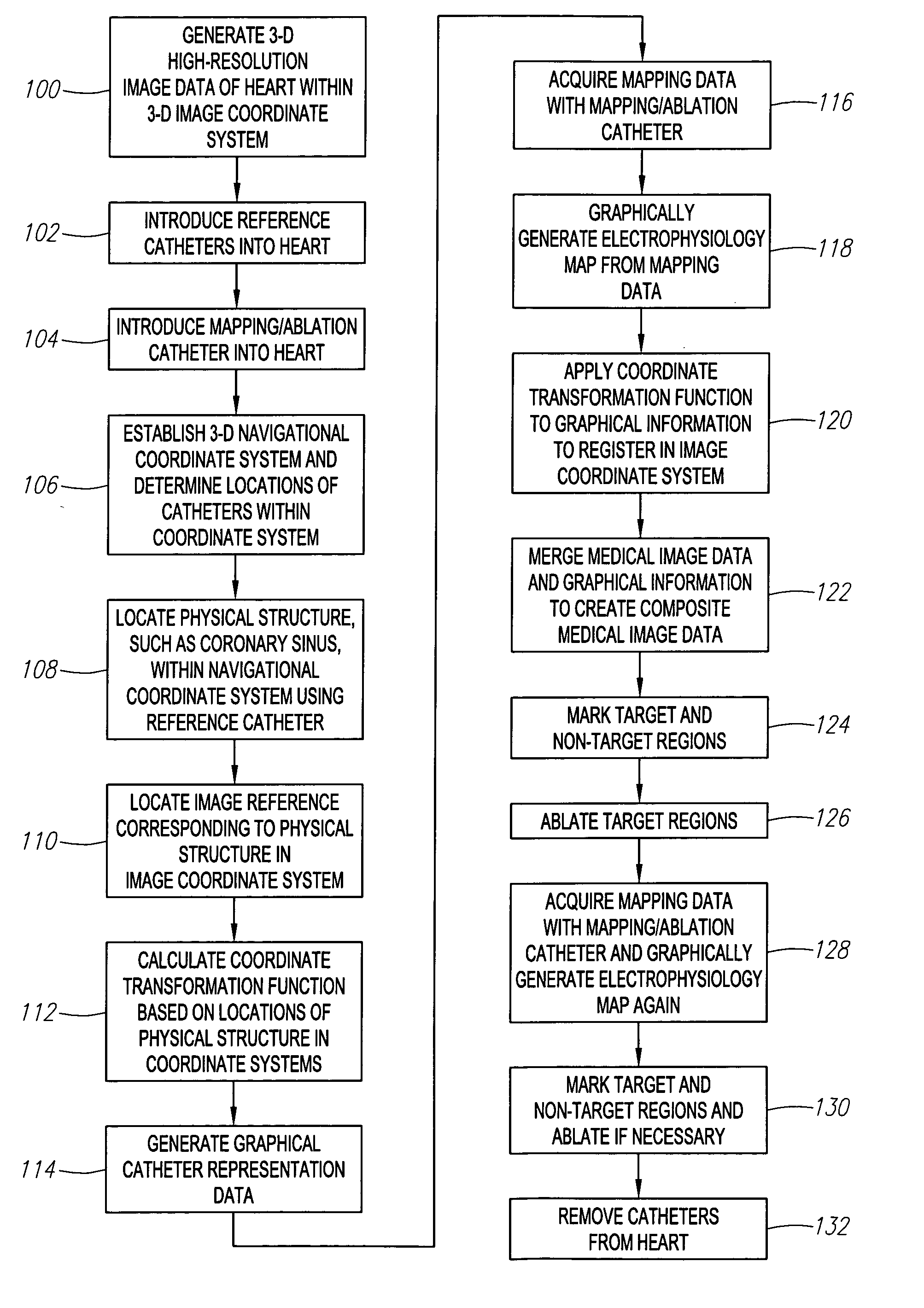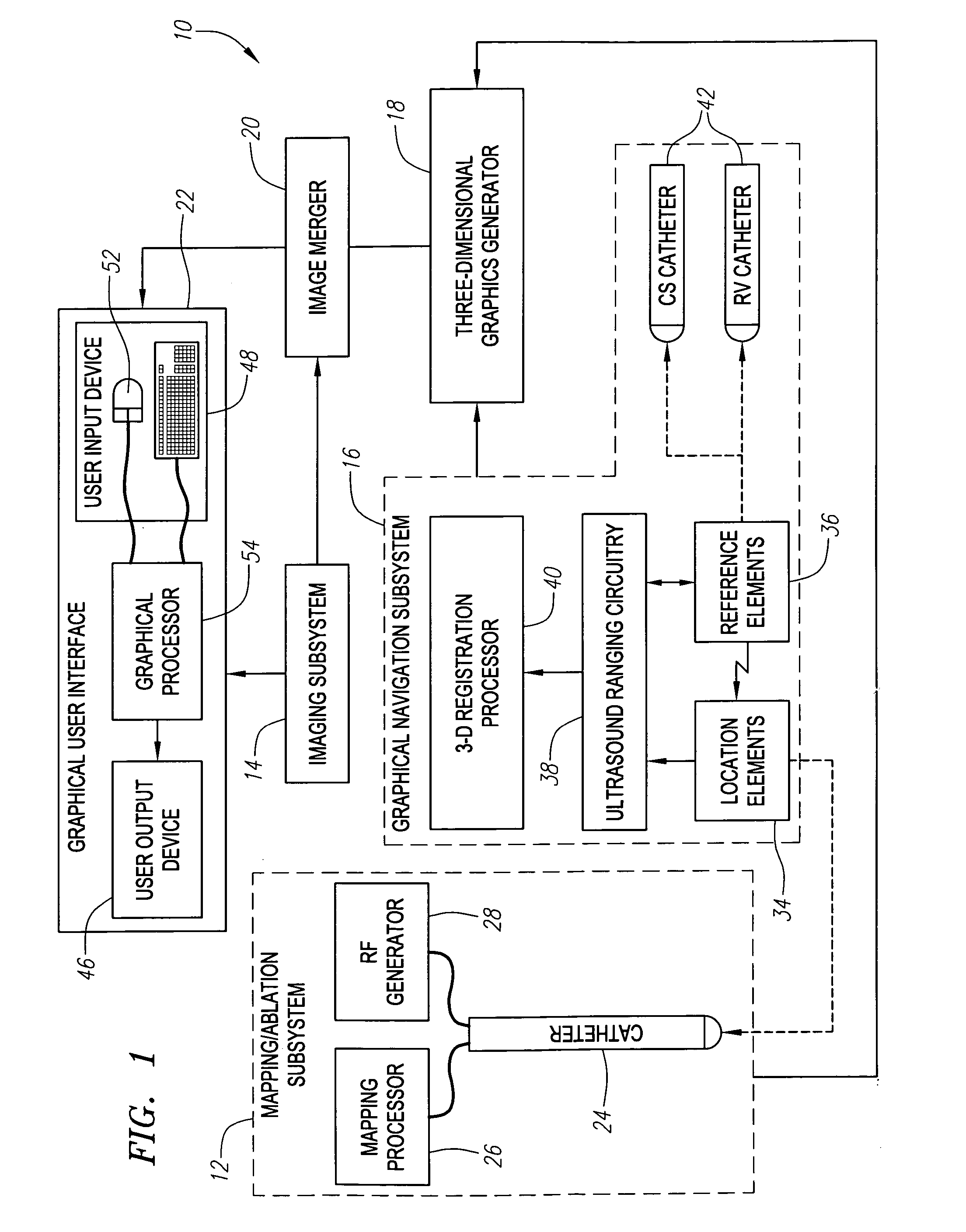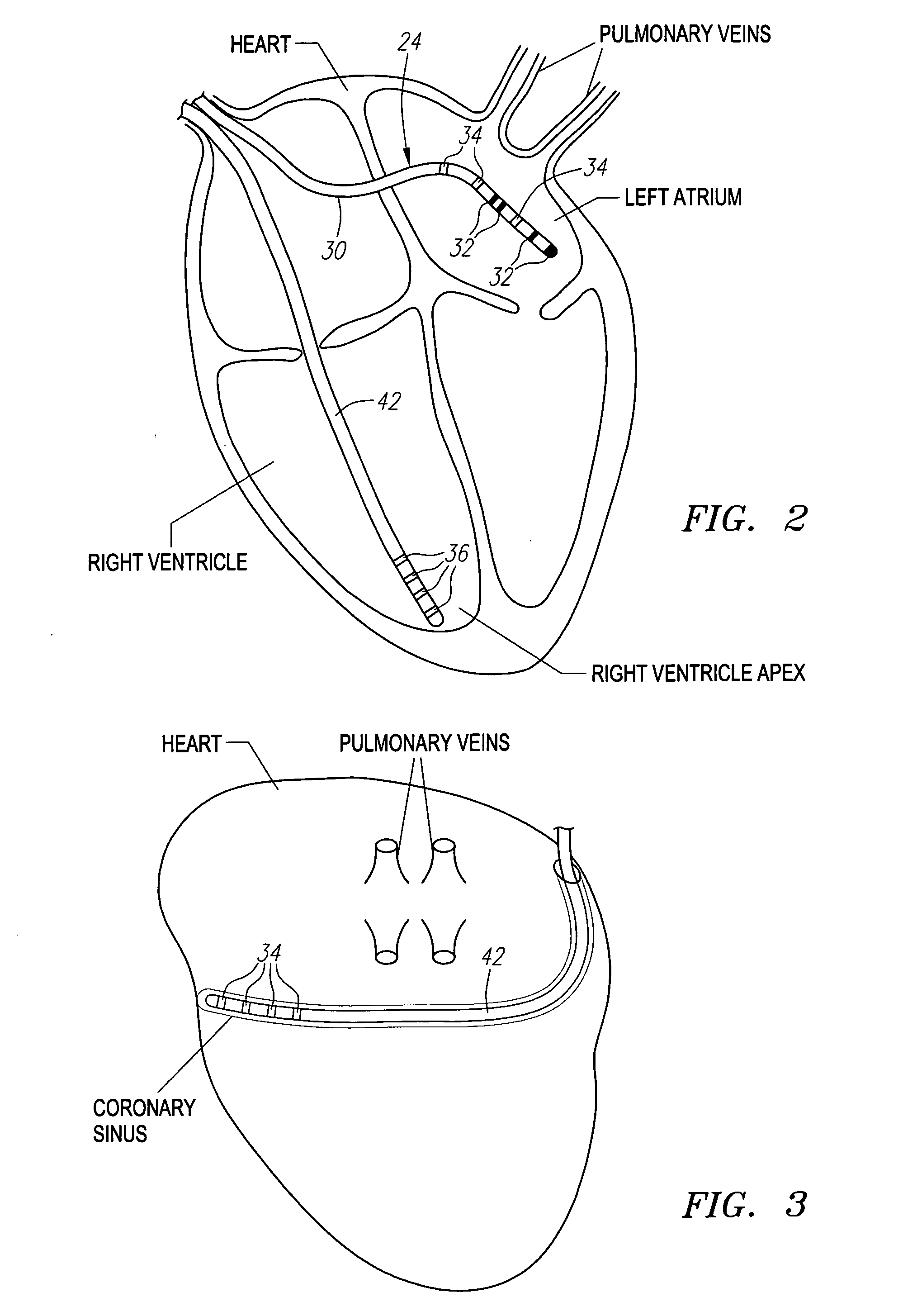Method and system for registering an image with a navigation reference catheter
a technology of image data and navigation reference, which is applied in the field of medical probes, can solve the problems of inability of physicians to visualize anatomy features as a reference for navigation, lack of resolution of conventional imaging systems, and inability of physicians to use fluoroscopy to locate catheters, etc., to achieve the effect of reducing errors and time, registering and merging graphical information and image data can be more accura
- Summary
- Abstract
- Description
- Claims
- Application Information
AI Technical Summary
Benefits of technology
Problems solved by technology
Method used
Image
Examples
Embodiment Construction
[0033] Referring to FIG. 1, an exemplary medical system 10 constructed in accordance with the present invention is shown. The medical system 10 is particularly suited for mapping and treating a heart (shown in FIGS. 2 and 3). Nevertheless, it should be appreciated that it can be used for treating, diagnosing, or otherwise displaying other anatomical bodies, such as the prostate, brain, gall bladder, uterus, esophagus, and other regions of the body.
[0034] The medical system 10 generally comprises (1) a mapping / ablation subsystem 12 for mapping and ablating tissue within the heart; (2) an imaging subsystem 14 for generating a high-resolution medical image of the heart; (3) a graphical navigation subsystem 16 for registering mapping data and the movement of medical devices within a three-dimensional navigational coordinate system (which in the illustrated embodiment, may also be referred to as a graphical coordinate system); (4) a three-dimensional graphics generator 18 for generating...
PUM
 Login to View More
Login to View More Abstract
Description
Claims
Application Information
 Login to View More
Login to View More - R&D
- Intellectual Property
- Life Sciences
- Materials
- Tech Scout
- Unparalleled Data Quality
- Higher Quality Content
- 60% Fewer Hallucinations
Browse by: Latest US Patents, China's latest patents, Technical Efficacy Thesaurus, Application Domain, Technology Topic, Popular Technical Reports.
© 2025 PatSnap. All rights reserved.Legal|Privacy policy|Modern Slavery Act Transparency Statement|Sitemap|About US| Contact US: help@patsnap.com



